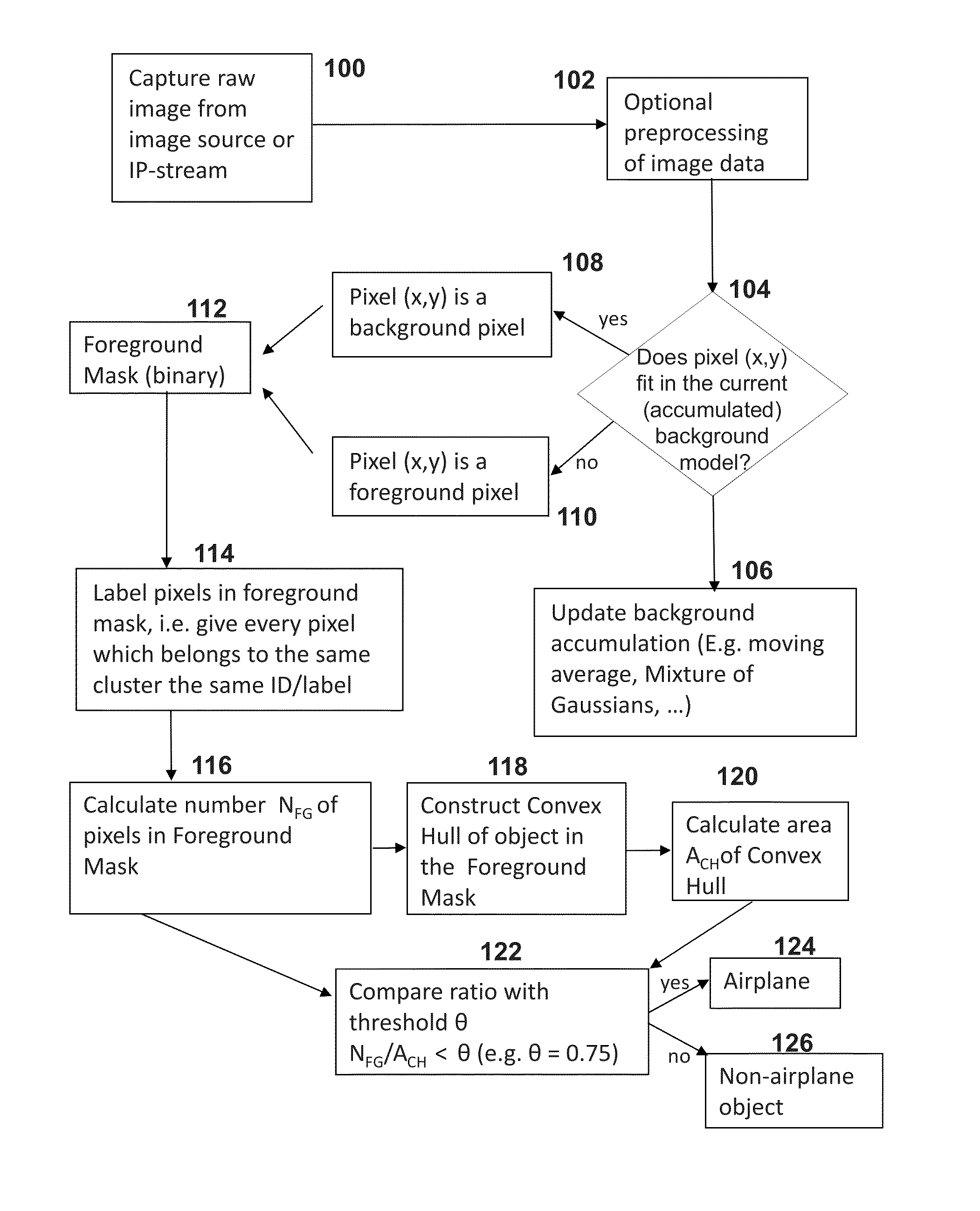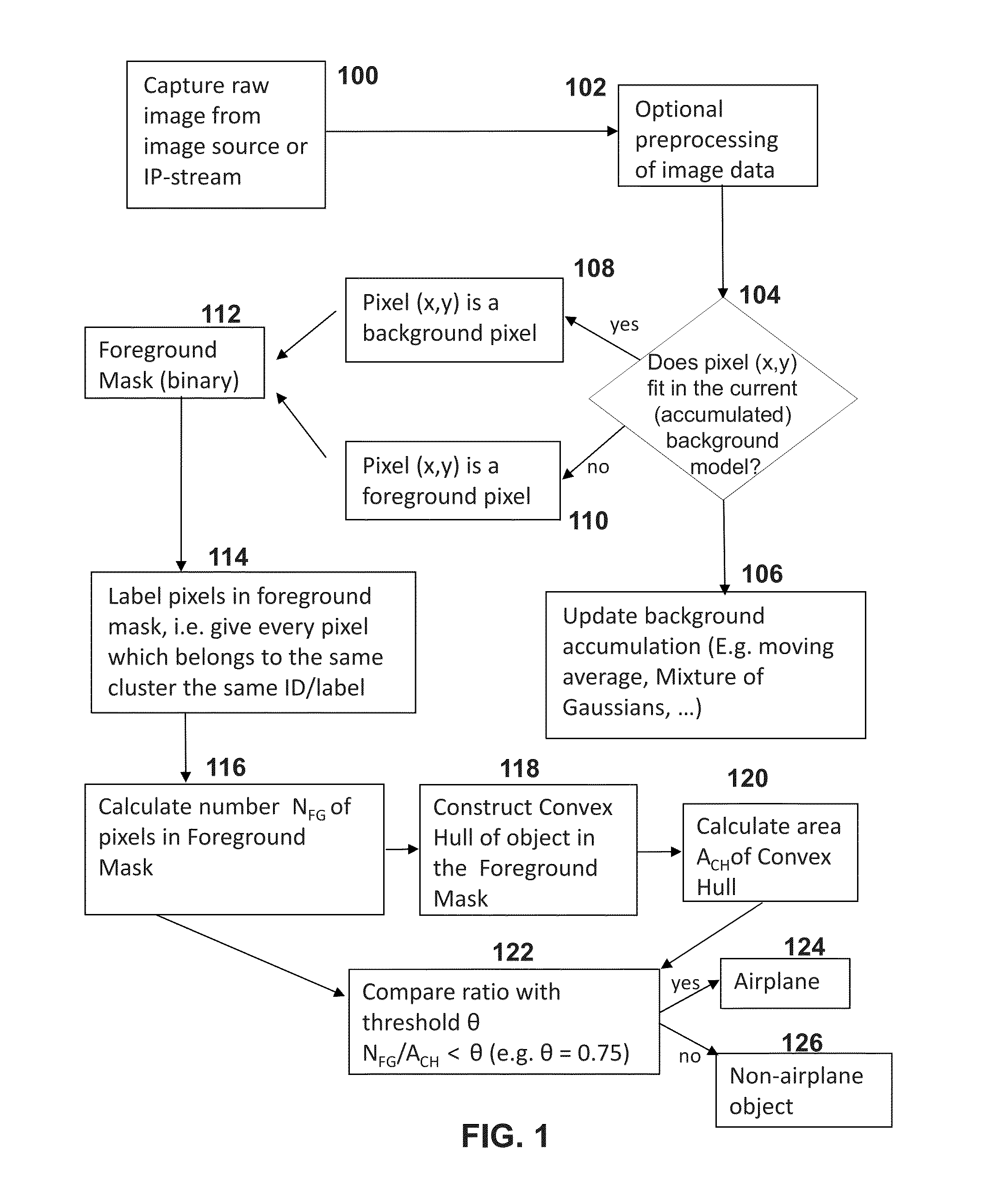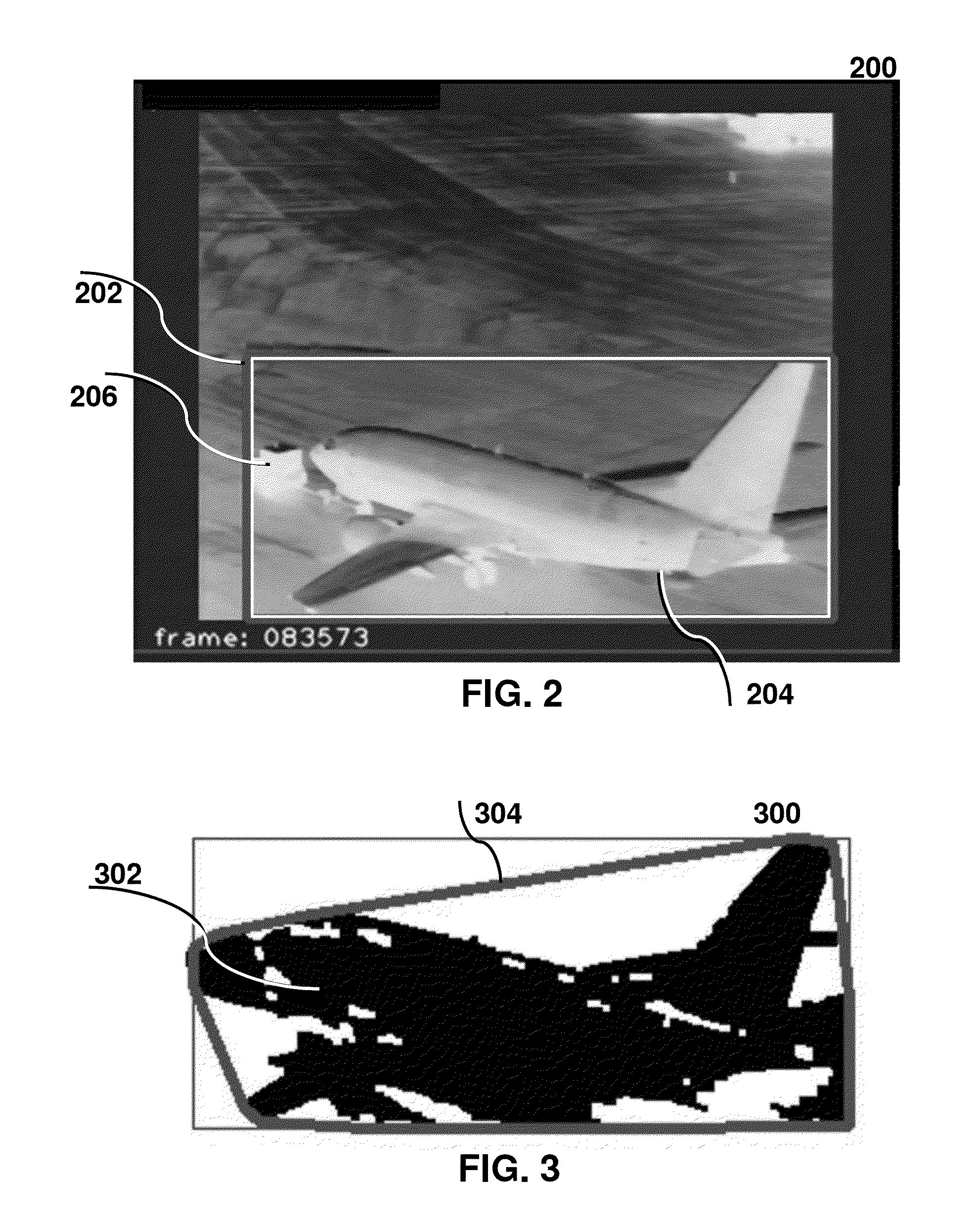Systems and methods to classify moving airplanes in airports
a technology of moving airplanes and classification methods, applied in the field of processor recognition, can solve the problems of not being able to provide effective visual detection and surveillance camera systems to determine the movement of objects in the airport area, and presenting operational risks or security threats
- Summary
- Abstract
- Description
- Claims
- Application Information
AI Technical Summary
Benefits of technology
Problems solved by technology
Method used
Image
Examples
Embodiment Construction
[0025]In certain areas of an airport, such as runways, roll ways and park ways only airplanes are supposed to move and to be present, at least most of the time. For security reasons, it is beneficial to create an alert that indicates that an object not being an airplane is moving into or in a restricted area. It is not efficient or even desirable to have a person continuously watch surveillance monitors for such occurrences. For instance, many areas, each under surveillance by a camera, have sometimes constant movement on a screen of airplanes. A single person would have trouble to review each monitor constantly.
[0026]It is much more efficient to alert a person who has access to one or more surveillance monitors that an object not being an airplane is in a restricted space. Focused by such an alert, the person can review the image and determine if an object is allowed to enter the area. For instance, the object can be an aircraft refueling truck which is leaving the restricted area ...
PUM
 Login to View More
Login to View More Abstract
Description
Claims
Application Information
 Login to View More
Login to View More - R&D
- Intellectual Property
- Life Sciences
- Materials
- Tech Scout
- Unparalleled Data Quality
- Higher Quality Content
- 60% Fewer Hallucinations
Browse by: Latest US Patents, China's latest patents, Technical Efficacy Thesaurus, Application Domain, Technology Topic, Popular Technical Reports.
© 2025 PatSnap. All rights reserved.Legal|Privacy policy|Modern Slavery Act Transparency Statement|Sitemap|About US| Contact US: help@patsnap.com



